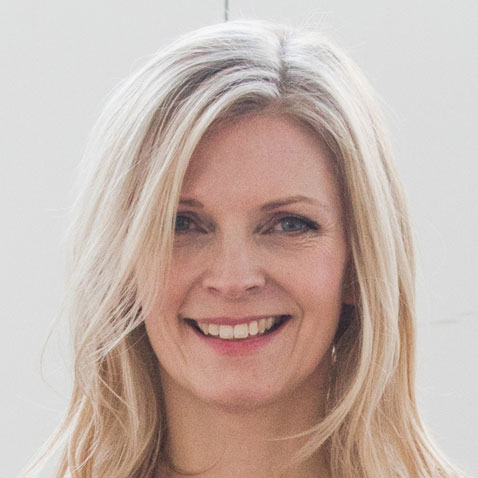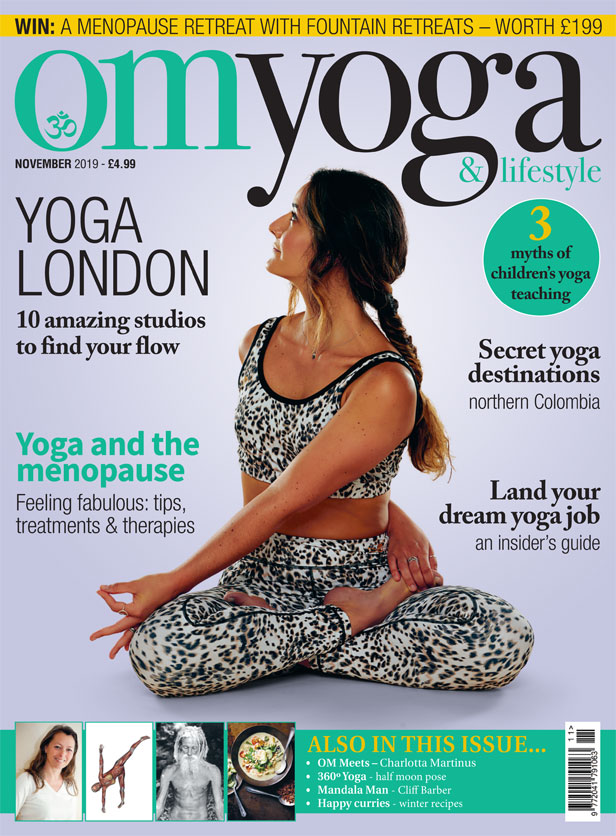
A 360º overview of...
Half Moon Pose (Ardha Chandrasana)
With Dr Kiki Morriss
This half moon pose will give you a wonderful sense of balance and alignment, as it strengthens your legs, hips and core.
Picture a half moon in the sky, as you hold your limbs on the same plane and focus on each breath.
The benefits of this pose:
- Strengthens and lengthens hips, legs and ankles.
- Stretches shoulders and opens chest.
- Develops core stability and strength.
- Improves balance, co-ordination and concentration.
- Lifts mood.
Cautions:
- Modify the pose (as below) if you have any neck discomfort or injury.
- Practice with care if you have any joint or spinal issues.
Variations:
- Place a yoga block under your lower hand if you are unable to straighten your standing leg when your hand is on the ground.
- Practice the pose with the back of your body against a wall. This will help with balance and will give additional support to your back.
- To keep your back leg raised, rest your foot on a support or ask someone to hold it up for you.
- If you have any neck discomfort or injury, keep your gaze directed towards the ground or look straight ahead.
- For an extra challenge, lift your lower hand away from the ground and rest it on your standing thigh.
MOVING INTO THE POSE
- Start in Triangle pose to your right side.
- Place your left hand on your left hip and your right hand on your right lower leg.
- Bend your right knee and place the fingers of your right hand on the ground in a cup shape. Position your hand so it is about 30cm in front of your right leg and in line with it.
- Simultaneously lift your left leg, keeping it extended, straighten your right knee and lift your left arm up. Learn to synchronise this action as you move into the pose with ease and grace.
- Externally rotate the left side of your body back a little, so your hips and shoulders are in one line.
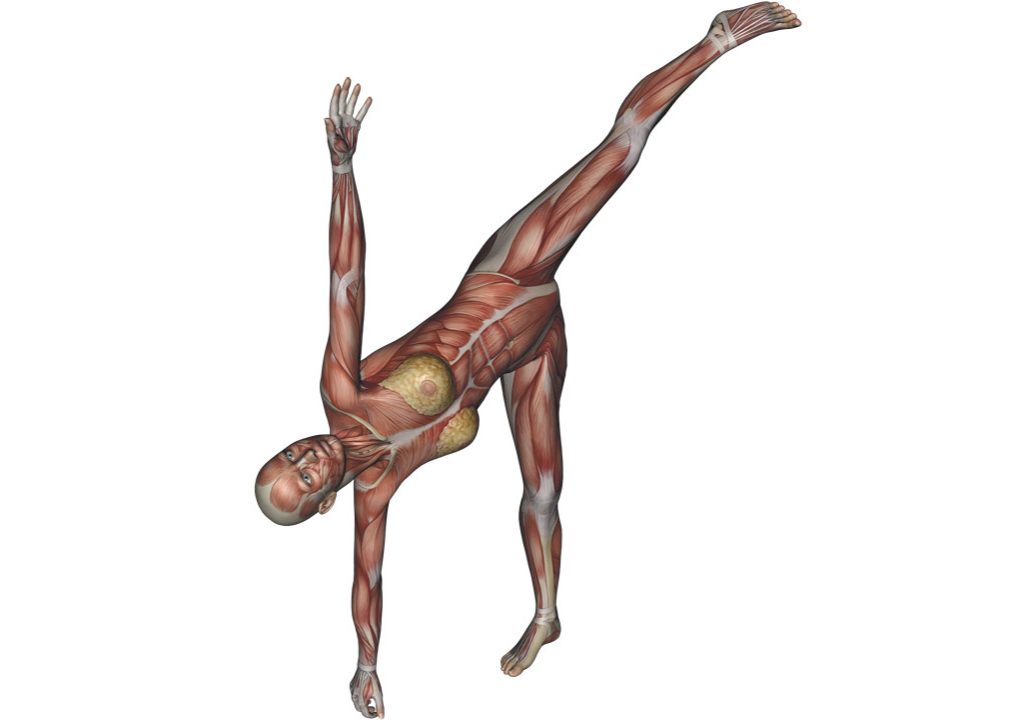
FOCUS YOUR GAZE
- Look up at your raised hand and use your gaze to help steady you in the balance.
- If you lose your balance, try gazing at a fixed point on the ground or straight ahead of you.
CUP YOUR LOWER HAND
- Place the fingertips of your lower hand lightly but firmly on the floor, facing the same way as your standing foot.
- Bend all your knuckles.
- Extend your arm and wrist upwards and away from your hand.
FOCUS ON YOUR STANDING LEG
- Straighten your knee using your quadriceps.
- Contract your gastrocnemius and soleus (calf muscles) to press your foot down and ground the pose.
- If you start to lose your balance, bend your knee to help regain your stability.
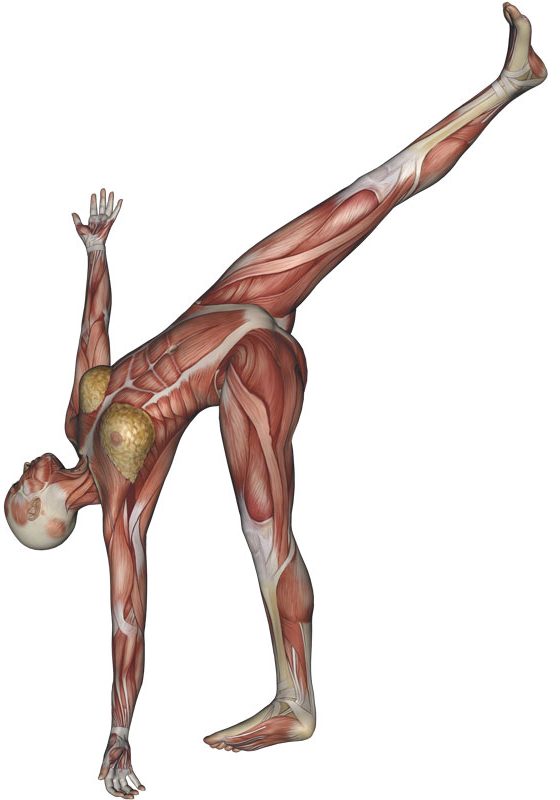
FOCUS ON YOUR RAISED LEG
- Use your gluteal muscles and tensor fascia lata to lift your leg parallel to the ground.
- Straighten your knee using your quadriceps.
- Use your gluteus maximus and psoas to stabilise your upper hip and to keep it from moving forwards and backwards.
- Align your upper hip directly above your lower hip, so they are in the same plane.
- Keep your raised foot in a neutral position.
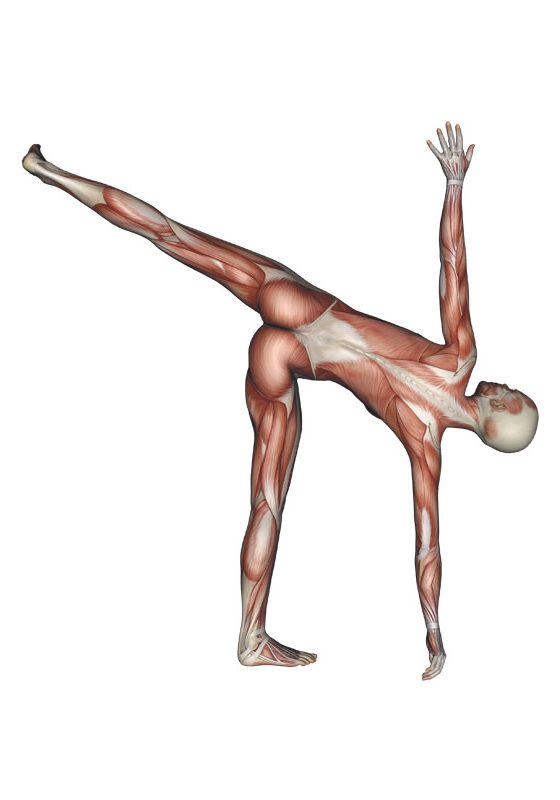
FOCUS ON YOUR TORSO
- Lengthen your spine to create equal length on either side of your torso.
FOCUS ON YOUR ARMS AND SHOULDERS
- Extend your arms from your shoulders.
- Use your triceps to straighten your elbows.
- Use your trapezius to open your chest and draw your shoulders away from your neck.
COMING OUT OF THE POSE
- Lower back down into Triangle pose and come up to standing.
- Repeat on the left side.


